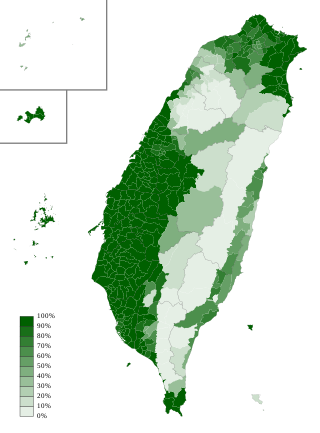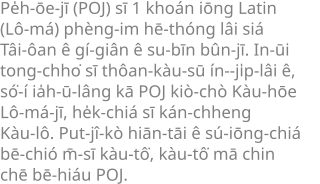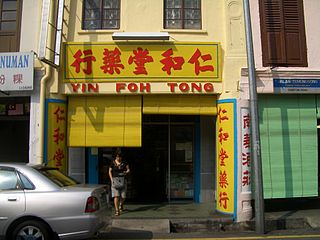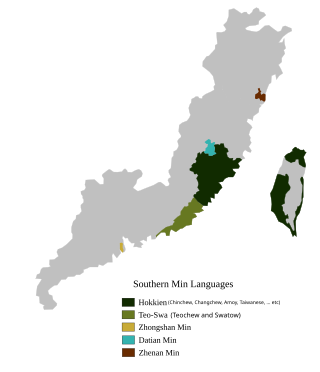Hanyu Pinyin, or simply pinyin, is the most common romanization system for Standard Chinese. In official documents, it is referred to as the Chinese Phonetic Alphabet. It is the official system used in China, Singapore, and by the United Nations. Its use has become common when transliterating Standard Chinese mostly regardless of region, though it is less ubiquitous in Taiwan. It is used to teach Standard Chinese, normally written with Chinese characters, to students already familiar with the Latin alphabet. The system makes use of diacritics to indicate the four tones found in Standard Chinese, though these are often omitted in various contexts, such as when spelling Chinese names in non-Chinese texts, or when writing non-Chinese words in Chinese-language texts. Pinyin is also used by various input methods on computers and to categorize entries in some Chinese dictionaries. The word Hànyǔ literally means 'Han language'—meaning, the Chinese language—while pīnyīn (拼音) literally means 'spelled sounds'.

Taiwanese Hokkien, or simply Taiwanese, also known as Taiuanoe, Taigi, Taigu, Taiwanese Minnan, Hoklo and Holo, is a variety of the Hokkien language spoken natively by more than 70 percent of the population of Taiwan. It is spoken by a significant portion of those Taiwanese people who are descended from Hoklo immigrants of southern Fujian. It is one of the national languages of Taiwan.

The Chinese Character Code for Information Interchange or CCCII is a character set developed by the Chinese Character Analysis Group in Taiwan. It was first published in 1980, and significantly expanded in 1982 and 1987.

Pe̍h-ōe-jī, sometimes known as Church Romanization, is an orthography used to write variants of Hokkien Southern Min, particularly Taiwanese and Amoy Hokkien, and it is widely employed as one of the writing systems for Southern Min. During its peak, it had hundreds of thousands of readers.
This Zhuyin table is a complete listing of all Zhuyin (Bopomofo) syllables used in the Republic of China (Taiwan) as auxiliary to Chinese language studies while in Mainland China an adaptation of the Latin alphabet is used to represent Chinese phonemes in the Pinyin system. Each syllable in a cell is composed of an initial (columns) and a final (rows). An empty cell indicates that the corresponding syllable does not exist in Standard Chinese.

The languages of Taiwan consist of several varieties of languages under the families of Austronesian languages and Sino-Tibetan languages. The Formosan languages, a geographically designated branch of Austronesian languages, have been spoken by the Taiwanese indigenous peoples for thousands of years. Owing to the wide internal variety of the Formosan languages, research on historical linguistics recognizes Taiwan as the Urheimat (homeland) of the whole Austronesian languages family. In the last 400 years, several waves of Han emigrations brought several different Sinitic languages into Taiwan. These languages include Taiwanese Hokkien, Hakka, and Mandarin, which have become the major languages spoken in present-day Taiwan.

Taiwanese kana is a katakana-based writing system that was used to write Taiwanese Hokkien when the island of Taiwan was under Japanese rule. It functioned as a phonetic guide to hanzi, much like furigana in Japanese or Zhuyin fuhao in Chinese. There were similar systems for other languages in Taiwan as well, including Hakka and Formosan languages.
There are many romanization systems used in Taiwan. The first Chinese language romanization system in Taiwan, Pe̍h-ōe-jī, was developed for Taiwanese by Presbyterian missionaries and promoted by the indigenous Presbyterian Churches since the 19th century. Pe̍h-ōe-jī is also the first written system of Taiwanese Hokkien; a similar system for Hakka was also developed at that time. During the period of Japanese rule, the promotion of roman writing systems was suppressed under the Dōka and Kōminka policy. After World War II, Taiwan was handed over from Japan to the Republic of China in 1945. The romanization of Mandarin Chinese was also introduced to Taiwan as official or semi-official standard.

The Amoy dialect or Xiamen dialect, also known as Amoyese, Amoy Hokkien, Xiamenese or Xiamen Hokkien, is a dialect of Hokkien spoken in the city of Xiamen and its surrounding metropolitan area, in the southern part of Fujian province. Currently, it is one of the most widely researched and studied varieties of Southern Min. It has historically come to be one of the more standardized varieties.
Bopomofo (ㄅㄆㄇㄈ), also called Zhuyin, occasionally Mandarin Phonetic Symbols, is a Chinese transliteration and writing system for Mandarin Chinese and other related languages and dialects. More commonly used in Taiwanese Mandarin, it may also be used to transcribe other varieties of Chinese, particularly other varieties of Mandarin Chinese dialects, as well as Taiwanese Hokkien. Consisting of 37 characters and five tone marks, it transcribes all possible sounds in Mandarin.

A semi-syllabary is a writing system that behaves partly as an alphabet and partly as a syllabary. The main group of semi-syllabic writing are the Paleohispanic scripts of ancient Spain, a group of semi-syllabaries that transform redundant plosive consonants of the Phoenician alphabet into syllabograms.

The different varieties of Chinese have been transcribed into many other writing systems.

Hokkien is a variety of the Southern Min Chinese languages, native to and originating from the Minnan region, in the southeastern part of Fujian in southeastern mainland China. It is also referred to as Quanzhang, from the first characters of the urban centers of Quanzhou and Zhangzhou.
Phofsit Daibuun (PSDB) (普實臺文) is an orthography in the Latin alphabet for Taiwanese Hokkien based on Modern Literal Taiwanese. It is able to use the ASCII character set to indicate the proper variation of pitch without any subsidiary scripts or diacritic symbols.

The official romanization system for Taiwanese Hokkien in Taiwan is locally referred to as Tâi-uân Bân-lâm-gí Lô-má-jī Phing-im Hong-àn or Taiwan Minnanyu Luomazi Pinyin Fang'an, often shortened to Tâi-lô. It is derived from Pe̍h-ōe-jī and since 2006 has been one of the phonetic notation systems officially promoted by Taiwan's Ministry of Education. The system is used in the MoE's Dictionary of Frequently-Used Taiwan Minnan. It is nearly identical to Pe̍h-ōe-jī, apart from: using ts tsh instead of ch chh, using u instead of o in vowel combinations such as oa and oe, using i instead of e in eng and ek, using oo instead of o͘, and using nn instead of ⁿ.
Hokkien, a Southern Min variety of Chinese spoken in Southeastern China, Taiwan and Southeast Asia, does not have a unitary standardized writing system, in comparison with the well-developed written forms of Cantonese and Vernacular Chinese (Mandarin). In Taiwan, a standard for Written Hokkien has been developed by the Republic of China Ministry of Education including its Dictionary of Frequently-Used Taiwan Minnan, but there are a wide variety of different methods of writing in Vernacular Hokkien. Nevertheless, vernacular works written in Hokkien are still commonly seen in literature, film, performing arts and music.
Mandarin Chinese is the primary formal Chinese language taught academically to Chinese Filipinos in Chinese Filipino schools and across other schools and institutions in the Philippines, especially as the formal written Chinese language.
Taiwanese Phonetic Symbols constitute a system of phonetic notation for the transcription of Taiwanese languages, especially Taiwanese Hokkien. The system was designed by Professor Chu Chao-hsiang, a member of the National Languages Committee in Taiwan, in 1946. The system is derived from Mandarin Phonetic Symbols by creating additional symbols for the sounds that do not appear in Mandarin phonology. It is one of the phonetic notation systems officially promoted by Taiwan's Ministry of Education.

The Bible translations into the languages of Taiwan are into Taiwanese, Hakka, Amis, and other languages of Taiwan.











